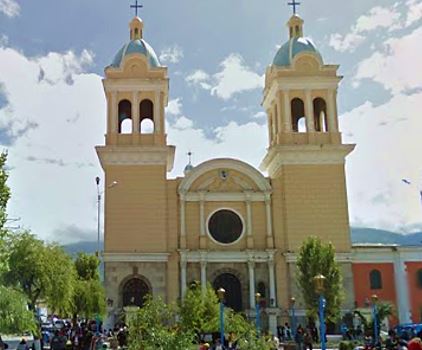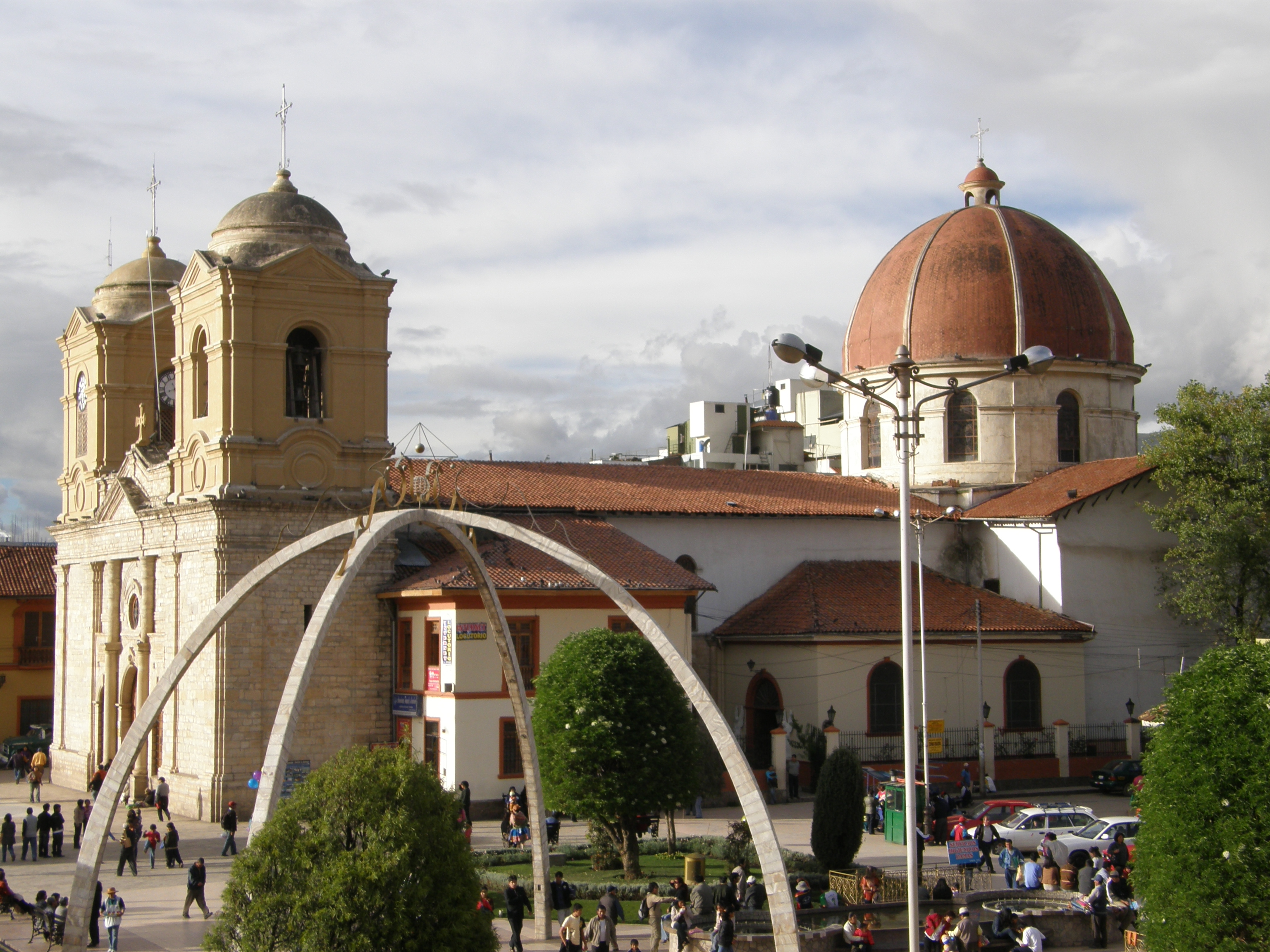Huancayo, Junín on:
[Wikipedia]
[Google]
[Amazon]
Huancayo (; in qu, label= Wanka Quechua, Wankayuq , '(place) with a (sacred) rock') is the capital of Junín Region, in the central highlands of Peru.


 Huancayo is located in
Huancayo is located in
''Perfil Sociodemográfico del Perú''
pp. 29–30, 32, 34. the three main districts of Huancayo have a total population of about 340,000. However, the continuous settlement area have already reached periurban districts, resulting in the agglomeration's population to be at least 380,000 people. Amerindian and Mestizos (Amerindian and Spanish ancestry) are the two largest ethnic groups in the city.
Instituto Cultural Peruano Británico
* Instituto Cultural Peruano Norteamericano - Región Centro (ICPNA) * Alianza Francesa de Huancayo (French Alliance, AF)
Official Portal Huancayo
*
Official Municipal website
{{Authority control Populated places in the Junín Region Cities in Peru 1572 establishments in the Spanish Empire Regional capital cities in Peru
Location


 Huancayo is located in
Huancayo is located in Huancayo Province
Huancayo Province is located in Peru. It is one of the 9 provinces composing the Junín Region. It borders to the north with the Concepción Province, the east with the Satipo Province, the south with the Huancavelica Region and the west with the ...
, of which it is also the capital. Situated in the Mantaro Valley at an altitude of 3,271 meters, it belongs to the Quechua region. Depending on delimitation, the agglomeration has a population between 340,000 and 380,000 and is the fifth most populous city of the country. Huancayo is the cultural and commercial center of the whole central Peruvian Andes area. Huancayo Metropolitano is made up of seven districts that form the urban center of the Junín region. This region is considered central Peru's economic and social hub.
Historical overview
Pre-Columbian era
The area was originally inhabited by the Huancas. At around 500 BC, they were incorporated into theWari Empire
The Wari Empire or Huari Empire was a political formation that emerged around 600 CE in Peru's Ayacucho Basin and grew to cover much of coastal and highland Peru. The empire lasted for about 500 years, until 1100 CE. It existed during the same era ...
. Despite efforts to defend its independence, the Huancas were eventually subdued by the Inca leader Pachacutec in 1460 and the region was incorporated into the Inca empire. It subsequently became a notable stopping point along the Inca '' Camino Real''.
Colonial era
After the Spanish colonization in 1534, Huancayo was overshadowed by Jauja, a provisional capital of Peru, until Lima took over that role, as established by theconquistador
Conquistadors (, ) or conquistadores (, ; meaning 'conquerors') were the explorer-soldiers of the Spanish and Portuguese Empires of the 15th and 16th centuries. During the Age of Discovery, conquistadors sailed beyond Europe to the Americas, O ...
Francisco Pizarro.
In 1570, the viceroy Francisco de Toledo established the site as the center of his ''encomienda'' ''Guancayo''. The town was officially established on 1 June 1572 with the title of ''Santísima Trinidad de Huancayo''. In 1813, Huancayo celebrated the promulgation of the Constitution of Cadiz, changing the name of "Plaza del Comercio" to "Plaza de la Constitución".
Republican era
During the war for independence, Huancayo was liberated on 20 November 1820. Construction on the cathedral commenced in 1831. The accord was made law in Huancayo in 1854, when Peru officially ended slavery. There is a statue in the Plaza Constitución commemorating this.Recent situation
Today, in addition to its importance as a center of commerce, Huancayo is known for the crafts and the many festivals of the surrounding towns. Having rapidly expanded in recent decades, it has few remaining colonial buildings. Currently, the cityscape is dominated by modern construction. The city's rise began with the construction of a central railway Callao-La Oroya in 1908 and later extended from Lima to Huancayo in the early 1930s. The railway connection between Lima and Huancayo, introduced new ways of transporting goods. The railway's new avenues for transport contributed to the city's economic and population growth. Population growth was mostly present in Tambo and Chilica, two suburban districts near the highways. Furthermore, population growth between 1981 and 2007 was a result of in-migration due to terrorist attacks of ''Sendero Luminoso
The Shining Path ( es, Sendero Luminoso), officially the Communist Party of Peru (, abbr. PCP), is a communist guerrilla group in Peru following Marxism–Leninism–Maoism and Gonzalo Thought. Academics often refer to the group as the Communis ...
''. People from highlands and amazonian lowlands sought refugee in Andean cities such as Huancayo.
Demographics
According to the National Census of 2007,Instituto Nacional de Estadística e Informática''Perfil Sociodemográfico del Perú''
pp. 29–30, 32, 34. the three main districts of Huancayo have a total population of about 340,000. However, the continuous settlement area have already reached periurban districts, resulting in the agglomeration's population to be at least 380,000 people. Amerindian and Mestizos (Amerindian and Spanish ancestry) are the two largest ethnic groups in the city.
Asian
Asian may refer to:
* Items from or related to the continent of Asia:
** Asian people, people in or descending from Asia
** Asian culture, the culture of the people from Asia
** Asian cuisine, food based on the style of food of the people from Asi ...
(mainly descendants of Japanese and Chinese immigrants) and European
European, or Europeans, or Europeneans, may refer to:
In general
* ''European'', an adjective referring to something of, from, or related to Europe
** Ethnic groups in Europe
** Demographics of Europe
** European cuisine, the cuisines of Europe ...
descendants are important minority groups.
Transport
Huancayo has transportation connections by road and rail. TheFrancisco Carle Airport
Francisco Carle Airport is a high-elevation regional airport serving Jauja, in the Junin Region of Peru, and surrounding cities such as Huancayo and Tarma. It is currently served by two scheduled airlines. The airport terminal and runways have u ...
at Jauja offers daily connections to Lima and is located 45 minutes via car from Huancayo. Current airlines include LATAM Peru, LC Peru, and Peruvian Airlines. To travel by road, the Carretera Central links Huancayo with La Oroya and Lima, which generally takes 7 to 8 hours. Multiple bus carriers operate between Lima and Huancayo daily. The Ferrocarril Central Andino
Ferrocarril Central Andino (FCCA) is the consortium which operates the Ferrovías Central railway in Peru linking the Pacific port of Callao and the capital Lima with Huancayo and Cerro de Pasco. As one of the Trans-Andean Railways it is the seco ...
enables transport by rail. Huancayo was a break-of-gauge from gauge to gauge for the extension to Huancavelica. In 2009, this line was being standardised. There was a plan Metro Wanka
Metro, short for metropolitan, may refer to:
Geography
* Metro (city), a city in Indonesia
* A metropolitan area, the populated region including and surrounding an urban center
Public transport
* Rapid transit, a passenger railway in an urba ...
to use the railway line as a local metro however this never came to fruition.
Education
Local universities
* Universidad Nacional del Centro del Peru (UNCP) * Universidad Peruana Los Andes (UPLA) *Universidad Continental
The Universidad Continental -- formerly the Universidad Continental de Ciencias e Ingeniería (UCCI) -- is a private university in Huancayo, Junín, Peru.
The university has branches in Lima, Arequipa and Cusco.
History
The Universidad Continen ...
(UC)
* Universidad Franklin Roosevelt (UFR)
Branches of other Peruvian universities
* Universidad Alas Peruanas (UAP) * Universidad Los Angeles de Chimbote (ULADECH) * Universidad Nacional Mayor de San Marcos (UNMSM) * Universidad Nacional Daniel Alcides Carrión (UNDAC) * Universidad de Huanuco (UDH)Language institutes
Instituto Cultural Peruano Británico
* Instituto Cultural Peruano Norteamericano - Región Centro (ICPNA) * Alianza Francesa de Huancayo (French Alliance, AF)
Notable people
*Damaris Mallma Porras
Damaris Mallma Porras (born January 26, 1986 in Huancayo), is a Peruvian folk singer. She is a representative of contemporary Andean music, which consists of a mix of the traditional Native American language Quechua and modern pop music.
Biogr ...
(1986- ), Peruvian folk singer
* Josué Sánchez
Josué Sánchez Cerron is a Peruvians, Peruvian painter born in Huancayo, Peru in 1945.
(1945- ), painter
* Rodolfo Cerrón Palomino (1940- ), linguist
* Víctor Alberto Gil Mallma (1930–1975), musician
* Juan Parra del Riego
''Juan'' is a given name, the Spanish and Manx versions of '' John''. It is very common in Spain and in other Spanish-speaking communities around the world and in the Philippines, and also (pronounced differently) in the Isle of Man. In Spanish, ...
(1894–1925), poet
* Enrique Bernardo
Enrique () is the Spanish language, Spanish variant of the given name Heinrich (given name), Heinrich of Germanic origin.
Equivalents in other languages are Henry (given name), Henry (English), Enric (Catalan), Enrico (Italian), Henrik (Swedish, D ...
(1980–), tenor and pianist
See also
* Wanka (disambiguation) * Plaza El Coliseo, bullfighting stadium * Papa a la Huancaína (literally, Huancayo style potatoes), a Peruvian dishReferences
External links
*Official Portal Huancayo
*
Official Municipal website
{{Authority control Populated places in the Junín Region Cities in Peru 1572 establishments in the Spanish Empire Regional capital cities in Peru